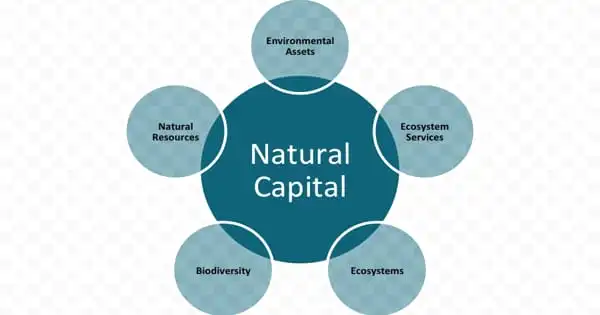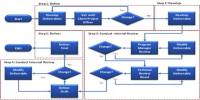Natural capital is the world’s stock of natural assets, which includes geology, soil, air, water, and all living things. Humans derive a wide range of services, often referred to as ecosystem services, from this Natural Capital, which makes human life possible. Food, water, plant materials used for fuel, building materials, and medicines are the most obvious ecosystem services.
Natural capital refers to the world’s stock of natural resources, which includes geology, soils, air, and water, as well as all living organisms. Some natural capital assets, known as ecosystem services, provide people with free goods and services. All of these support our economy and society, making human life possible.
Poorly managed Natural Capital becomes a social and economic liability in addition to an ecological liability. Working against nature by overexploiting Natural Capital can be disastrous not only for biodiversity loss, but also for humans, as ecosystem productivity and resilience decline over time and some regions become more vulnerable to extreme events like floods and droughts.
It is an extension of the economic concept of capital (resources that allow for the production of more resources) to goods and services provided by nature. A well-managed forest or river, for example, may provide an indefinitely sustainable flow of new trees or fish, whereas excessive use of those resources may result in a permanent decline in timber availability or fish stocks.
Natural capital refers to the Earth’s environmental stock or resources that provide goods, flows, and ecological services required to sustain life. Minerals, water, waste assimilation, carbon dioxide absorption, arable land, habitat, fossil fuels, erosion control, recreation, visual amenity, biodiversity, temperature regulation, and oxygen are examples of natural capital. Natural capital has monetary value because it is used to power many businesses.
Natural capital also provides essential services to people, such as water catchment, erosion control, and crop pollination by insects, ensuring the long-term viability of other natural resources. The structure and diversity of habitats and ecosystems are important components of natural capital because the continuous supply of services from available natural capital assets is dependent on a healthy, functioning environment. Natural capital asset checks are methods that assist decision-makers in understanding how changes in the current and future performance of natural capital assets will impact human well-being and the economy.
Natural capital is a way of viewing nature as a stock that provides a continuous flow of benefits to people and the economy. It is made up of natural capital assets like water, forests, and clean air. Ecosystem services are the goods and services that natural capital provides, such as food, water, and climate regulation. These provide people all over the world with the means to live healthy lives and serve as the foundation for all economic activity.
Natural capital refers to elements of the natural environment that provide people with valuable goods and services. Woodland, for example, can be viewed as a natural capital asset that provides valuable benefits or ecosystem services such as flood risk reduction and carbon capture.
















